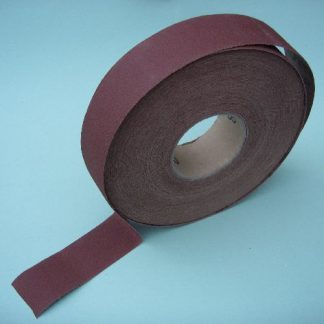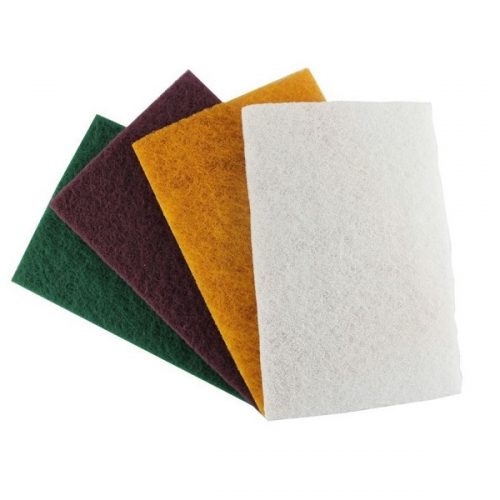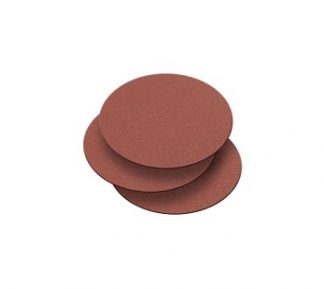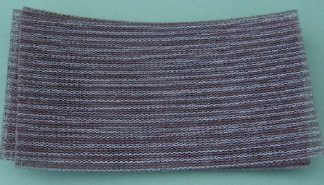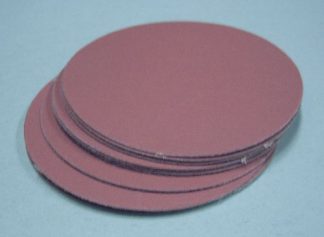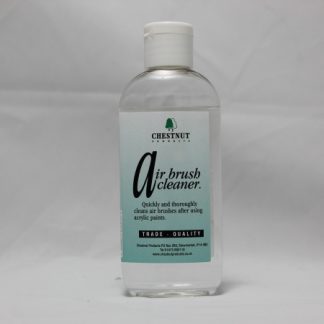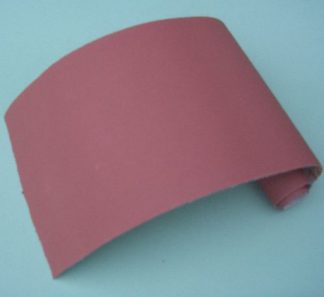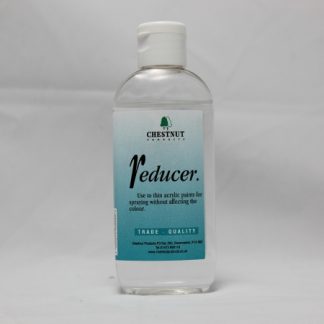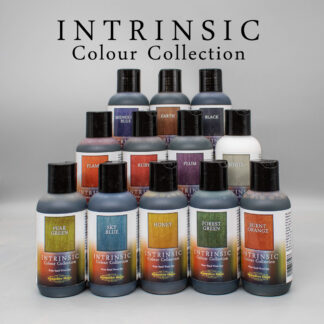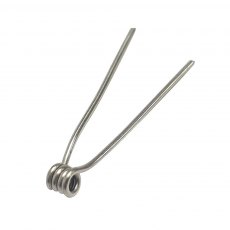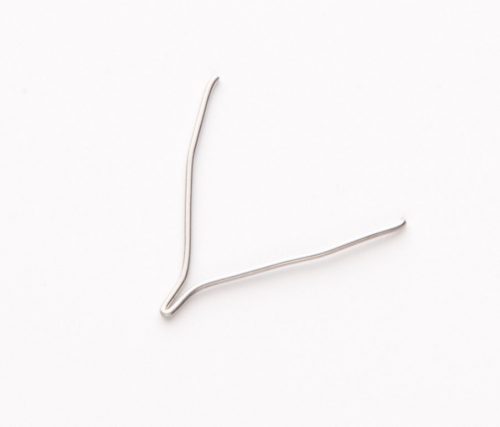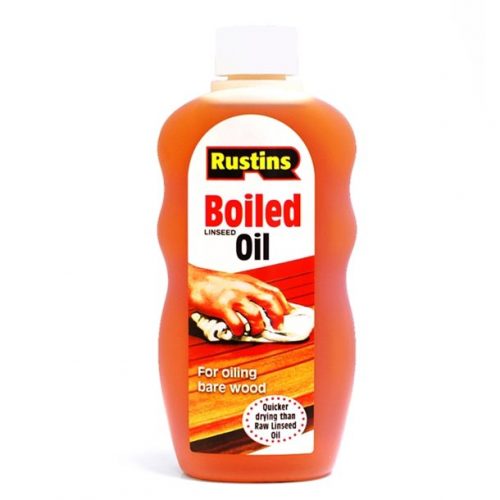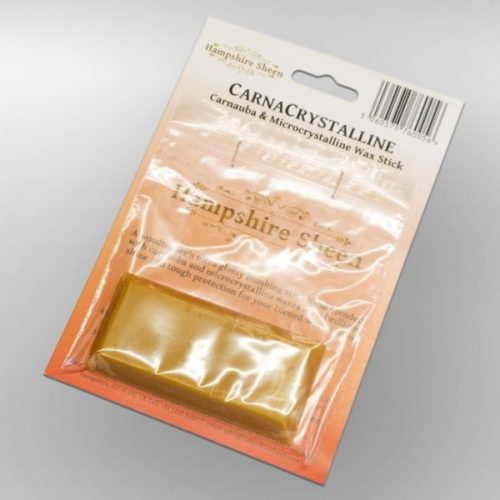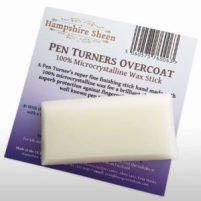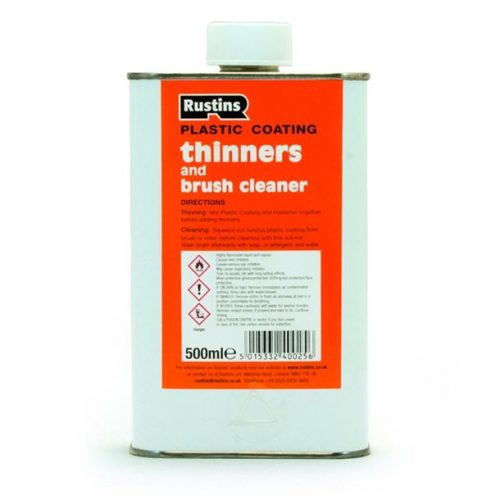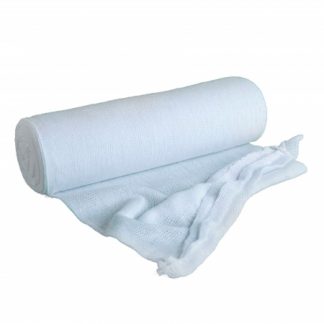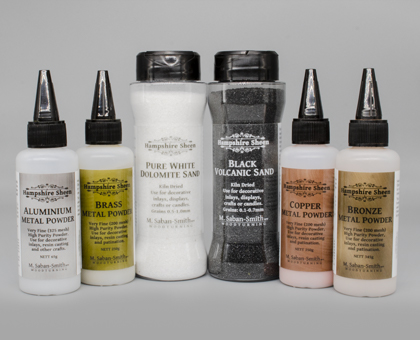-
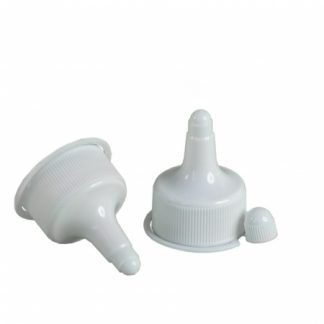 These Dispensing Nozzles are, in fact, almost indispensable! They fit onto any of Chestnuts' plastic bottles in the 250ml, 500ml and 1 ltr sizes, simply replacing the existing cap. Cut the tip off to the size you want and use the handy cover to reseal them when not in use. A useful by product of using these is that if you knock a bottle over the amount you lose through the small nozzle will be much less than without it. Just don’t forget to take the nozzle off the bottle before you throw it away so that you can re-use it! These nozzles are not child resistant, the correct closure should be replaced when the product is not in use.
These Dispensing Nozzles are, in fact, almost indispensable! They fit onto any of Chestnuts' plastic bottles in the 250ml, 500ml and 1 ltr sizes, simply replacing the existing cap. Cut the tip off to the size you want and use the handy cover to reseal them when not in use. A useful by product of using these is that if you knock a bottle over the amount you lose through the small nozzle will be much less than without it. Just don’t forget to take the nozzle off the bottle before you throw it away so that you can re-use it! These nozzles are not child resistant, the correct closure should be replaced when the product is not in use. -
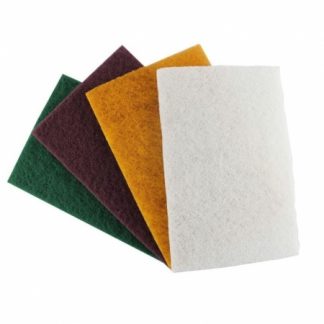 NyWeb pads are a non-woven nylon webbing with an abrasive – either silicon carbide or aluminium oxide – embedded into them to give an exactly defined cut.
NyWeb pads are a non-woven nylon webbing with an abrasive – either silicon carbide or aluminium oxide – embedded into them to give an exactly defined cut.- The Green pads are 400 grit
- The Red pads are 600 grit
- The Orange pads are 1000 grit
- The White pads do not contain an abrasive and are thus technically non-abrasive, but the very texture of the pads gives them an incredibly fine – but immeasurable – cut.
-
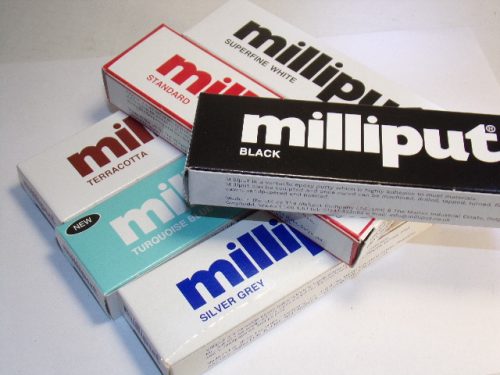 Milliput Epoxy Putty, the two sticks have a long shelf life but once mixed the resultant putty is at first soft and highly adhesive and then gradually hardens. Speed of hardening is dependant on temperature and at normal temperatures (20-25ºC) Milliput becomes rock hard in three to four hours. By the application of heat the setting time can be reduced to a few minutes. After setting hard Milliput continues to cure and is fully cured after an elapse of time equal to the setting time at the same temperature. Once fully cured Milliput can be machined, drilled, tapped, turned, filed, sawn, sandpapered and painted. Milliput can be sandpapered and painted immediately it has set. (it is advisable to wear eye protection during this process). Milliput is an excellent adhesive and will bond any of the following to itself or to any of the others - wood, brick, cement, metals, concrete, plastics, glass etc, but note that Milliput is not intended as a thin layer adhesive and should not be used where a paste, mucilage or thin glue is indicated. Milliput will set under water and is heat resistant up to 130°C. Shelf Life: Recommended that Milliput is stored in cool, dry conditions. Please reseal bags after use. Stored correctly this product should remain workable for about 2 years. Available in six colours: Standard (Yellow/Grey), Terracotta, Silver Grey, Black, Superfine White and Turquoise Blue.
Milliput Epoxy Putty, the two sticks have a long shelf life but once mixed the resultant putty is at first soft and highly adhesive and then gradually hardens. Speed of hardening is dependant on temperature and at normal temperatures (20-25ºC) Milliput becomes rock hard in three to four hours. By the application of heat the setting time can be reduced to a few minutes. After setting hard Milliput continues to cure and is fully cured after an elapse of time equal to the setting time at the same temperature. Once fully cured Milliput can be machined, drilled, tapped, turned, filed, sawn, sandpapered and painted. Milliput can be sandpapered and painted immediately it has set. (it is advisable to wear eye protection during this process). Milliput is an excellent adhesive and will bond any of the following to itself or to any of the others - wood, brick, cement, metals, concrete, plastics, glass etc, but note that Milliput is not intended as a thin layer adhesive and should not be used where a paste, mucilage or thin glue is indicated. Milliput will set under water and is heat resistant up to 130°C. Shelf Life: Recommended that Milliput is stored in cool, dry conditions. Please reseal bags after use. Stored correctly this product should remain workable for about 2 years. Available in six colours: Standard (Yellow/Grey), Terracotta, Silver Grey, Black, Superfine White and Turquoise Blue. -
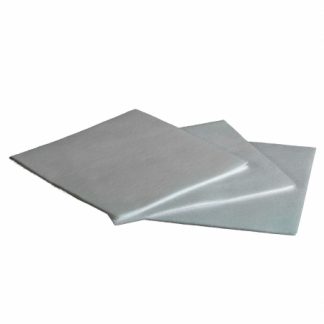 Safety Cloth is a thick, non-woven paper cloth. Designed to stay wet longer to assist the transfer of finishes to your chosen surface, it also tears very easily if it gets caught in revolving parts thus avoiding the danger of fingers being dragged into machinery. The texture of Safety Cloth ensures that a thin, even coat is applied and the thickness means that it retains it’s strength and the same piece can be used several times with the same finish. Safety Cloth is not a replacement for common sense and good safety practise.
Safety Cloth is a thick, non-woven paper cloth. Designed to stay wet longer to assist the transfer of finishes to your chosen surface, it also tears very easily if it gets caught in revolving parts thus avoiding the danger of fingers being dragged into machinery. The texture of Safety Cloth ensures that a thin, even coat is applied and the thickness means that it retains it’s strength and the same piece can be used several times with the same finish. Safety Cloth is not a replacement for common sense and good safety practise. -
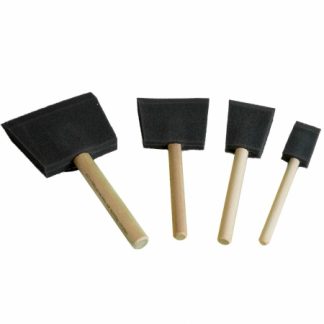 Made in the USA, these are the original and best quality Foam Brush. Manufactured using a special foam with a stiffener inside to make sure they keep their shape in use, and supplied with a solid wooden handle attached. Great for eliminating brush marks (no bristles = no brush marks) and there’s no danger of any stray bristles coming loose and spoiling your work. Priced to be semi-disposable they will normally wash out several times for re-use. Fantastic for applying acrylic finishes which have a tendency to froth up when applied by brush – the Foam Brush virtually eliminates this completely. Can also be used for painting, particularly gloss paints, seasoned users have been known to have a brush in each hand!
Made in the USA, these are the original and best quality Foam Brush. Manufactured using a special foam with a stiffener inside to make sure they keep their shape in use, and supplied with a solid wooden handle attached. Great for eliminating brush marks (no bristles = no brush marks) and there’s no danger of any stray bristles coming loose and spoiling your work. Priced to be semi-disposable they will normally wash out several times for re-use. Fantastic for applying acrylic finishes which have a tendency to froth up when applied by brush – the Foam Brush virtually eliminates this completely. Can also be used for painting, particularly gloss paints, seasoned users have been known to have a brush in each hand! -
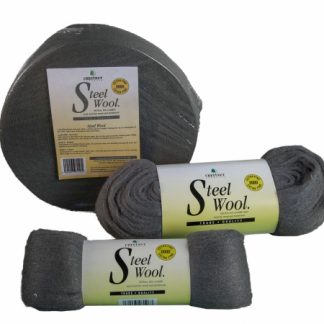 The finest of Steel Wool, very low crumble and virtually oil free to ensure there is no contamination of your work. Use it after sanding with abrasive sheets to give an ultra smooth surface, or to apply waxes to smooth the timber whilst applying a thin coat. Steel Wool burns very quickly and easily; keep it away from sources of combustion (i.e. sparks etc). Always use a knife or scissors to cut Steel Wool
The finest of Steel Wool, very low crumble and virtually oil free to ensure there is no contamination of your work. Use it after sanding with abrasive sheets to give an ultra smooth surface, or to apply waxes to smooth the timber whilst applying a thin coat. Steel Wool burns very quickly and easily; keep it away from sources of combustion (i.e. sparks etc). Always use a knife or scissors to cut Steel Wool -
 These beautiful micaceous-based colours are for artists and crafters who wish to add a touch of glamour or glitter to a piece, such as the translucent glow of an angel's wings, a butterfly, a fish or the brilliant iridescent shimmer on a mallard drake's neck. Simply mix the iridescent colours directly into your paints or apply after decorating to highlight specific areas. The choice is yours. For best use when using the Iridescent paints in an Airbrush, looks well on an ebonised background.
These beautiful micaceous-based colours are for artists and crafters who wish to add a touch of glamour or glitter to a piece, such as the translucent glow of an angel's wings, a butterfly, a fish or the brilliant iridescent shimmer on a mallard drake's neck. Simply mix the iridescent colours directly into your paints or apply after decorating to highlight specific areas. The choice is yours. For best use when using the Iridescent paints in an Airbrush, looks well on an ebonised background. -
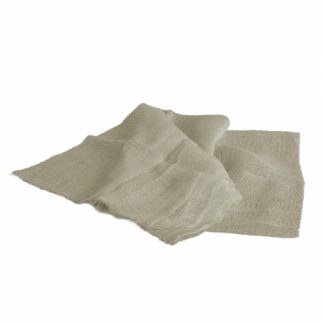 Tack Cloths are coated with a special, sticky resin. The resin doesn’t transfer off the cloth but when you wipe it across a surface it picks up and dust and removes it, leaving behind a clean surface ready for finishing. This makes it ideal for use after your final sanding to make sure that all of the sawdust generated is removed and doesn’t affect your finishing. Tack Cloths are supplied in a sealed wrapper; once opened store them in an air-tight container to prevent them from drying out. Do not use Tack Cloth with the lathe running.
Tack Cloths are coated with a special, sticky resin. The resin doesn’t transfer off the cloth but when you wipe it across a surface it picks up and dust and removes it, leaving behind a clean surface ready for finishing. This makes it ideal for use after your final sanding to make sure that all of the sawdust generated is removed and doesn’t affect your finishing. Tack Cloths are supplied in a sealed wrapper; once opened store them in an air-tight container to prevent them from drying out. Do not use Tack Cloth with the lathe running. -
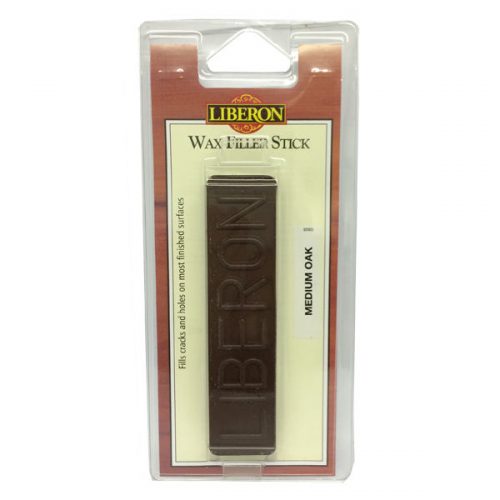 Wax Filler Sticks are blended wax filler used to repair cracks, splits and small to medium-sized holes without sanding or having to strip the finish. Available in a wide range of intermixable wood colours, they can be applied without a heat source, are quick drying and have no shrinkage making them ideal for use on finished furniture and other articles.
Wax Filler Sticks are blended wax filler used to repair cracks, splits and small to medium-sized holes without sanding or having to strip the finish. Available in a wide range of intermixable wood colours, they can be applied without a heat source, are quick drying and have no shrinkage making them ideal for use on finished furniture and other articles. -
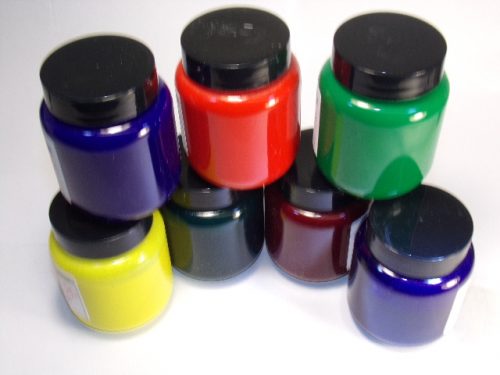 Llewellyn Ryland Polyester Pigment are coloured liquid/paste mediums based on pigments dispersed within a solvent-free reactive unsaturated polyester resin. They are available in a wide range of colours varying in strength and consistency depending upon the particular colouring application. They have been developed to blend easily into resin systems. The range of colours is based upon pigments carefully selected for colour fastness, opacity, heat stability and having minimum effect upon the curing characteristics of the final system. The resin used with the Polyester Colour Paste is a specially developed solvent-free reactive polyester resin which chemically cross links with the moulding resin so that the colour is "locked in" once the system has cured. They can be used to colour most polyester resin based systems used within the composites or related industry. These Polyester Colour Pastes have excellent stability.
Llewellyn Ryland Polyester Pigment are coloured liquid/paste mediums based on pigments dispersed within a solvent-free reactive unsaturated polyester resin. They are available in a wide range of colours varying in strength and consistency depending upon the particular colouring application. They have been developed to blend easily into resin systems. The range of colours is based upon pigments carefully selected for colour fastness, opacity, heat stability and having minimum effect upon the curing characteristics of the final system. The resin used with the Polyester Colour Paste is a specially developed solvent-free reactive polyester resin which chemically cross links with the moulding resin so that the colour is "locked in" once the system has cured. They can be used to colour most polyester resin based systems used within the composites or related industry. These Polyester Colour Pastes have excellent stability. -
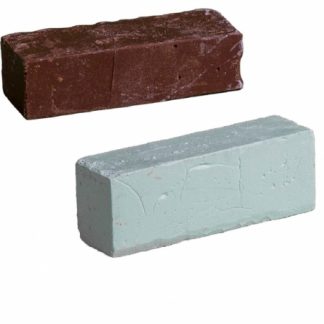 These compounds are designed to co-ordinate with the cloth used in the Buffing Wheels and Dome Buffs to give an exceptional cut and prepare the surface to a very smooth finish prior to using wax. Compound 1 -the brown one – (sometimes referred to as tripoli) is used with the ‘A’ Wheel/Dome to help smooth the applied finish. Avoid overloading the wheel/dome where possible to prevent a build up of the compound. If this happens it can be removed by either washing in soapy water or abrading the edge of the wheel with a coarse abrasive. Do not use on very open grained light coloured timber as the compound can get lodged in the grain and colour the piece. Compound 2 – the white one – (sometimes referred to as white diamond) acts as a cleanser to remove any traces of Compound 1 left on the surface (but not from the grain) and also has a very fine abrasive contained in it which smooths the work, leaving a semi-gloss finish and a superb foundation for the top coat of wax. Use Compound 2 sparingly, too much on the wheel will result in smears on the surface of your work which can be removed with buffing but this can be very time consuming and frustrating. It’s always best to apply a little and add more if needed.
These compounds are designed to co-ordinate with the cloth used in the Buffing Wheels and Dome Buffs to give an exceptional cut and prepare the surface to a very smooth finish prior to using wax. Compound 1 -the brown one – (sometimes referred to as tripoli) is used with the ‘A’ Wheel/Dome to help smooth the applied finish. Avoid overloading the wheel/dome where possible to prevent a build up of the compound. If this happens it can be removed by either washing in soapy water or abrading the edge of the wheel with a coarse abrasive. Do not use on very open grained light coloured timber as the compound can get lodged in the grain and colour the piece. Compound 2 – the white one – (sometimes referred to as white diamond) acts as a cleanser to remove any traces of Compound 1 left on the surface (but not from the grain) and also has a very fine abrasive contained in it which smooths the work, leaving a semi-gloss finish and a superb foundation for the top coat of wax. Use Compound 2 sparingly, too much on the wheel will result in smears on the surface of your work which can be removed with buffing but this can be very time consuming and frustrating. It’s always best to apply a little and add more if needed. -
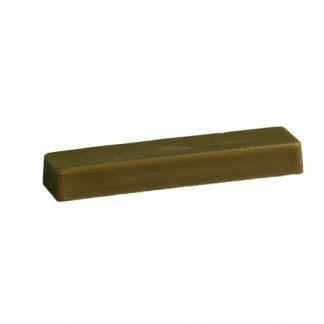 This is a solid block of carnauba wax, popular with woodturners. It gives a bright gloss finish and is also very hard wearing, able to withstand a medium amount of handling without showing finger marks. Apply over a sanding sealer by holding it against your work at it revolves on the lathe. Do not press too much – the wax is very hard and can scratch softer woods – the idea is to generate enough heat for the wax to melt slightly and transfer onto the wood. (This is easier than it sounds!). Use sparingly, and use the polishing process (using safety cloth) to ensure the wax is spread evenly. Buffing will produce a high gloss finish.
This is a solid block of carnauba wax, popular with woodturners. It gives a bright gloss finish and is also very hard wearing, able to withstand a medium amount of handling without showing finger marks. Apply over a sanding sealer by holding it against your work at it revolves on the lathe. Do not press too much – the wax is very hard and can scratch softer woods – the idea is to generate enough heat for the wax to melt slightly and transfer onto the wood. (This is easier than it sounds!). Use sparingly, and use the polishing process (using safety cloth) to ensure the wax is spread evenly. Buffing will produce a high gloss finish. -
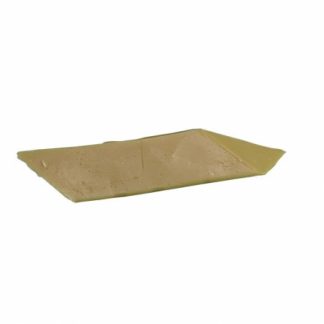 Woodturners stick wax is a mixture of beeswax and carnauba wax it is slightly softer than the Carnauba Wax Stick and therefore slightly easier to apply and there are no concerns about it marking softer woods. Applied over a sanding sealer, simply hold the stick against the revolving work and allow the heat generated to melt the wax onto the wood. Buff up straight away using Safety Cloth, using the cloth to ensure an even coating.
Woodturners stick wax is a mixture of beeswax and carnauba wax it is slightly softer than the Carnauba Wax Stick and therefore slightly easier to apply and there are no concerns about it marking softer woods. Applied over a sanding sealer, simply hold the stick against the revolving work and allow the heat generated to melt the wax onto the wood. Buff up straight away using Safety Cloth, using the cloth to ensure an even coating. -
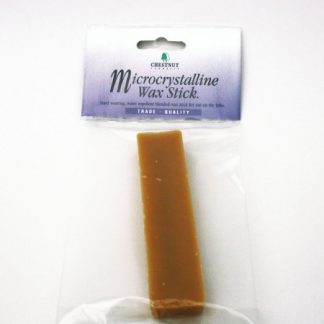
 This is the same wax Chestnut use in the tinned version of Microcrystalline Wax but in a solid block form with no solvent. This means there’s no waiting around for it to dry before buffing it.
Like the original version, this wax should be used very sparingly, a little goes a very long way and once applied it might even be necessary to spread it thinner using Safety Cloth (the texture of this makes it ideal for this purpose).
The Microcrystalline Wax Stick is also perfect for use on the Buffing Wheel System, use it on Wheel C to buff up to a brilliant, hard wearing finish.
This is the same wax Chestnut use in the tinned version of Microcrystalline Wax but in a solid block form with no solvent. This means there’s no waiting around for it to dry before buffing it.
Like the original version, this wax should be used very sparingly, a little goes a very long way and once applied it might even be necessary to spread it thinner using Safety Cloth (the texture of this makes it ideal for this purpose).
The Microcrystalline Wax Stick is also perfect for use on the Buffing Wheel System, use it on Wheel C to buff up to a brilliant, hard wearing finish. -

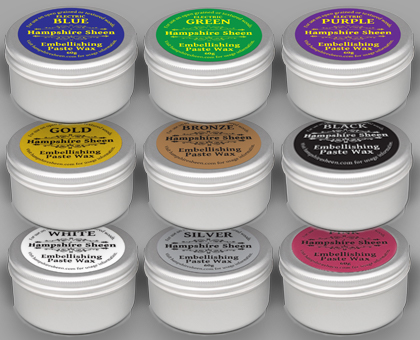 Hampshire Sheen Embellishing Wax are ideal for enhancing open grained decorative items from woods such as Oak or Ash or woods with added texture. They work brilliantly in combination with the Intrinsic Colour Collection and this selection available in nine colours are a great, easy to apply alternative to gilt creams. Supplied in 60g tins.
Hampshire Sheen Embellishing Wax are ideal for enhancing open grained decorative items from woods such as Oak or Ash or woods with added texture. They work brilliantly in combination with the Intrinsic Colour Collection and this selection available in nine colours are a great, easy to apply alternative to gilt creams. Supplied in 60g tins.

